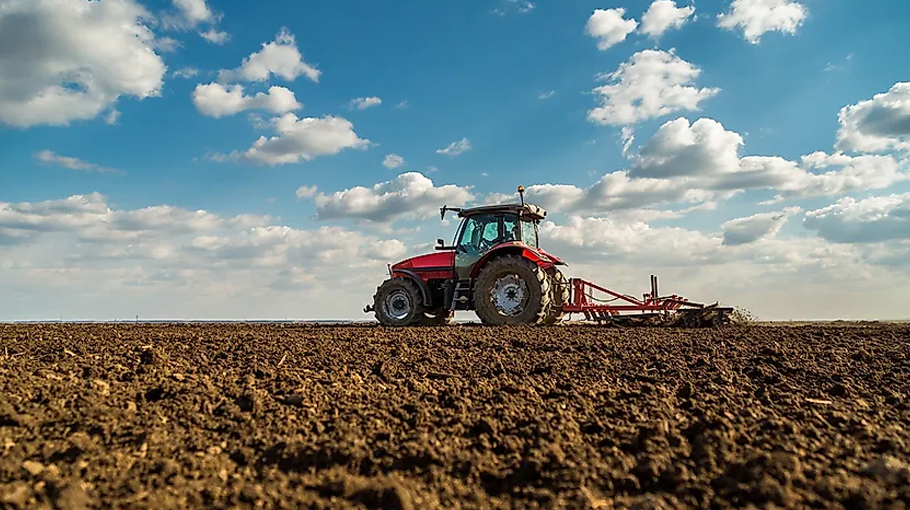Move for farming every inch of land

The government has undertaken an initiative to cultivate every inch of land so that there is no shortage of food in the country.
As part of the government move, the concerned departments are working according to these instructions and have taken various initiatives for the programmes.
The aim of these initiatives is to increase food production by bringing vast uncultivated lands under cultivation and to reduce import dependence.
Meanwhile, the government has already taken a plan to increase crop production in fallow lands in the char areas of the country.
In order to implement the plan, a project titled, “Expansion of modern agricultural technology suitable for char areas of Bangladesh,” has been undertaken, an official of the Agriculture Ministry said.
The proposed cost of the project is estimated at Tk 228 crore, they said adding that it will be implemented by the Department of Agricultural Extension (DAE) of the Ministry of Agriculture. Project proposals have recently been sent to the Planning Commission, he said.
“The commission will take the next decision after verification and selection,” he said, adding that the project will be implemented for a period of six years after approval.
In this regard, Mohammad Benazir Alam, former director-general of the Department of Agricultural Extension, said that the project is being undertaken with the aim of increasing the production of suitable crops in the char areas of the country, achieving food security, nutrition and sustainable development of socio-economic conditions.
“Improved varieties of mustard and maize can be cultivated in the char,” he mentioned.
“There are huge opportunities for the cultivation of various types of rabi crops in the char,” he said adding that the production of modern varieties of rabi crops will also increase employment in the char areas.
Alam said, “Although the population of the country is increasing, sadly arable land is also declining due to various reasons. As a result of the use of fallow Char land, the food shortage of the country will be met on one hand and the wheel of fortune of the poor people of Char would change on the other hand.”
The officials of the Agriculture Ministry said that there are about 1,01,892 hectares of fallow land in the char areas of the country.
The crop density of these lands is 140 percent (if there is only one crop in land then its crop density is taken as 100 percent, therefore 140 percent crop density means one crop in that land and half of another crop).
The government has taken initiative to bring these fallow lands under cultivation. If the plan is implemented, agriculture will be commercialized and women and young entrepreneurs’ groups will be formed.
The crop density of these areas will increase by another 5 percent through modern agricultural technology, improved crop varieties and expansion of activities. To this end, 4,281 solar panels (solar-powered) light traps, 4,281 LNPs (low lift pumps) will be distributed for the use of fallow land.
It is learned that a total of 121 huge sheds, 121 submersible pumps and 121 solar systems will be installed in the char.
According to the Department of Agricultural Extension, there are about 2,225 sq km of char areas in the country. Where 15 lakhs people live and most of them are poor.
About 67 percent of this vast pasture is in the north, which is about 1,500 square kilometers.
The use of advanced technology is needed to change the fate of the people of Char by cultivating crops in these chars. It is also important to use fallow land.
The officials of the department say that even if the crop is harvested in the char areas, it is not at the desired level.
This is because the farmers are following the conventional and primitive farming methods. As there is a lack of good seeds, there is no method of agricultural decentralization.
However, there is a possibility of increasing the yield by cultivating through improved seeds and agricultural mechanization.
Utilizing this potential, the project has been proposed for the purpose of socio-economic development of the farmers through employment by increasing the density of the crop.
Under this project various activities including skill development of farmers will be implemented.
This includes skill development of farmers in 4,281 batches, to develop the skills of farmers who grow vegetables in seedling production and water house and to organize 1,210 field days, 411 agricultural fairs, 30 seminars and 360 motivational trips.
Under this project, there will be 88,181 agricultural technology extension exhibitions. It will display various types of agricultural products. Among them are sugarcane, jute, black cumin, sweet potato, sunflower, chilli, beans and so on. The project has been proposed for implementation in 121 upazilas of 35 districts.


